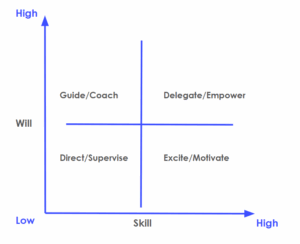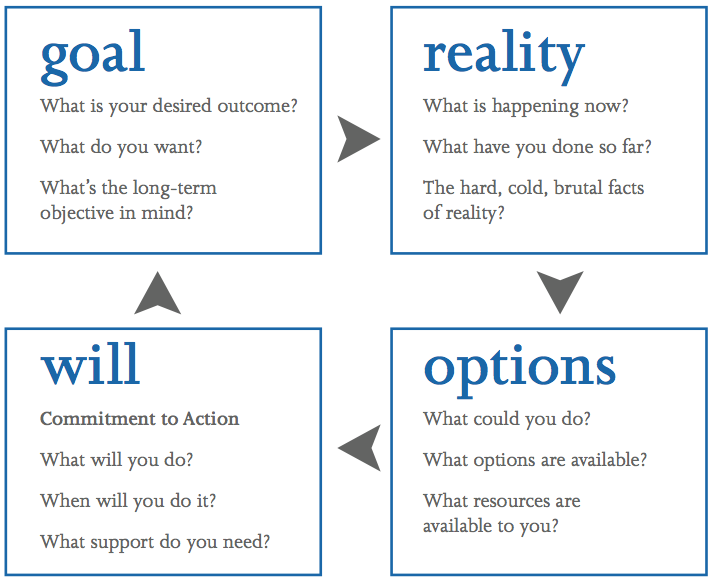Why Performance Management Matters
Performance management is a continuous, two-way communication process between managers and employees. It ensures that individuals stay aligned with strategic company goals, grow professionally, and remain engaged.
✨ Benefits
Aligns individual performance with business goals
Provides a foundation for promotions, transfers, or exits
Avoids escalation into PIPs (Performance Improvement Plans)
Enhances communication and effectiveness
Identifies growth opportunities
Boosts employee retention
Process
Performance management is not a once-a-year task — it's a continual journey composed of:
Prompt feedback, coaching, and development (ad hoc)
Weekly 1:1s with managers
Formal reviews and engagement surveys twice a year
Real-time feedback and goal updates ongoing
Q1 | Q2 | Q3 | Q4 | |||||||||
Jan | Feb | Mar | Apri | May | Jun | Jul | Aug | Sep | Oct | Nov | Dec | |
360 Performance Review | x | x | Comp | x | x | Dev | ||||||
x | x | |||||||||||
Growth planning | x | x | ||||||||||
Stay interviews (not yet implemented) | x | x | ||||||||||
Annual strategy setting | x | x | ||||||||||
Quarterly OKR | x | x | x | x | ||||||||
Recurring 1:1 Meetings (Continuous coaching) | x | x | x | x | x | x | x | x | x | x | x | x |
Real-time feedback | Ongoing | |||||||||||
Update goals & growth plans | Ongoing | |||||||||||
360° Performance Reviews
Twice a year, we conduct formal performance reviews using a 360° methodology involving:
Self-assessment
Manager reviews
Peer feedback
Direct reports feedback (upward)
Each cycle follows three steps:
Performance review steps
- Preparation
- Conversation
- Follow up
Writing a self review
Our performance reviews usually consist of the following questions:
What behaviours or actions should this team member CONTINUE to do?
Here’s some examples:
Something that works well and benefits the person, team, or MOSTLY AI;
Positive attributes;
Specific skills.
What could this team member START doing; and why would it be beneficial?
Here’s some examples:
Something that would benefit the person, team, or MOSTLY AI;
A new skill to add to the set;
A new positive behaviour.
What behaviours or actions should this team member STOP
doing; and why would it be beneficial?
Here’s some examples:
Something that is a waste of time;
A task that should be handed off;
Things that aren ́t working;
What are 2-3 things this team member should focus on in order
to continue developing in their career and support MOSTLY AI's
goals?Performance rating (from 1-5).
An open question for team members to address any other topics.
Below is an example of a self review completed by an (imaginary) AI Engineer:

Reviewing others
An effective performance review will help Mostlies identify their growth opportunities and potential areas of improvement, whilst maintaining healthy relationships.
We win as a team ![]() so our performance reviews use the 360º feedback methodology where everybody - Reviewees, Managers, Direct reports and Peers - chips in.
so our performance reviews use the 360º feedback methodology where everybody - Reviewees, Managers, Direct reports and Peers - chips in.
Tips - when delivering constructive feedback, be honest and consider the following:
Don’t shy away from difficult conversations
Be tactful: Honesty doesn’t have to be brutal
Set clear expectations for both the reviewee and yourself
Be specific and actionable
Think team-first: feedback should promote growth and collaboration
Use the Continue/Start/Stop framework for clarity
Use Slack's #mostly-kudos-and-tacos channel for instant praise
Visibility of assessments
Visibility for HR | Visibility for the Manager | Visibility for the Reviewee | ||||
|---|---|---|---|---|---|---|
Assessment result | Name of the author | Assessment result | Name of the author | Assessment result | Name of the author | |
Self-assessment | Immediately, once completed | Yes | Once the Manager review is completed | Yes | ||
Manager assessment | Immediately, once completed | Yes | Once the Manager shared it | Yes | ||
Assessments of direct reports | Immediately, once completed | Yes | Immediately, once completed | Yes | ||
Upward feedback (aka “Assessments of direct reports”) | Immediately, once completed | Yes | Shared in a non-identifiable way | |||
Peer assessments | Immediately, once completed | Yes | Immediately, once completed | Yes | Once the Manager shared it | Yes |
Performance Calibration
5 - Superb | 4 - Exceeds expectations | 3 - Consistently meets expectations | 2 - Needs improvement | 1 - Needs strong improvement | |
|---|---|---|---|---|---|
TL;DR |
|
|
|
|
|
In detail |
|
|
|
|
|
Optional: Skill Will Matrix
Managers can also use the Skill Will Matrix to further reflect on the reviewee’s performance and next steps. This is a powerful team management and leadership tool that allows Managers to make an initial diagnosis of a person’s will (willingness to perform) and skills (competence to perform).

Tips on how to deal with each scenario:
High will / high skill: Delegate/Empower
Provide freedom in job methodology
Communicate trust and recognition
Develop stretch goals, broaden responsibilities, treat as “partner”
High will / low skill: Guide/Coach
Reduce risks, obstacles, constraints
Provide tools, guidance, coaching, feedback upfront
Relax control as progress is shown
Low will / high skill: Excite/Motivate
Identify reason(s) for low will
Develop intrinsic motivation, incentives and value alignment
Monitor and provide recognition to reinforce positive behavior
Low will / low skill: Direct/Supervise
Brief clear, identify motives, develop vision for success
Structure quick wins
Supervise with frequent feedback and clear expectations
For a more detailed explanation of the Skill Will Matrix, check here.
Coaching
GROW is a simple framework to teach managers about coaching conversations. This model stresses the importance of adapting and flexing coaching styles based on the team member’s needs and receptiveness.
Giving Feedback
Giving feedback can be a scary process which makes it hard to do. This is because there are fears of damaging the relationship, being wrong, losing face or hurting the person. Holding back on providing feedback because you feel it isn't your place (if you are a peer) or believing it won't make a difference are also some reasons why we hold back.
The consequences of holding back can have a significant impact to MOSTLY´s culture. Patrick Lencioni, in his book The Five Dysfunctions of a Team (2002) cites the following five consequences:
Inattention to Results
Avoidance of Accountability
Lack of Commitment
Fear of Conflict
Absence of Trust
Elements of good feedback
Timely: Employees must receive the feedback as close to the event as possible.
Candid: Providing candid feedback means not being afraid to give your honest and constructive opinion on something, such as the performance of an employee or co-worker.
Specific: Feedback must be concrete and relate to a specific goal/situation.
Actionable: Effective feedback not only provides guidance to help an employee perform tasks correctly, it also clarifies expectations, builds a person’s confidence, and fosters trust between a worker and the manager.
Make it safe: Feedback should be presented in a positive, tactful and non-threatening manner. The employee providing feedback should remain calm and professional throughout the process. Additionally, feedback should be provided in the most appropriate location. For instance, any negative feedback should be given in private.
Cross cultural feedback
Could the individual’s background affect the way they prefer to receive feedback?
Team members from many different cultures and backgrounds might respond to things differently. You may need to adapt your tone and style according to the individual and the relationship you have with them. Some things to think about are:
Do you need to build relationship before candor is comfortable?
Is their communication generally explicit or implicit?
Influence of hierarchy in direct feedback?
Reading The Culture Map can help you understand the communication and feedback styles of different countries. Something very useful at MOSTLY AI.
SBI Feedback Tool
The SBI method provides a simple structure to deliver actionable and effective feedback:
Situation: you outline the situation you are referring to, so that you can provide clear context. When and where did you observe the situation? This gives the other person a specific reference point.
Behavior: you address the behavior you have seen. Avoid making assumptions or subjective judgments about someone's behaviors. These could be wrong, and they may undermine your feedback.
Impact: you highlight the impact of the person´s behavior on you, the team, the organization
